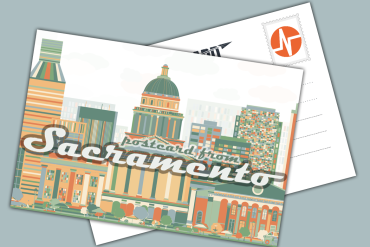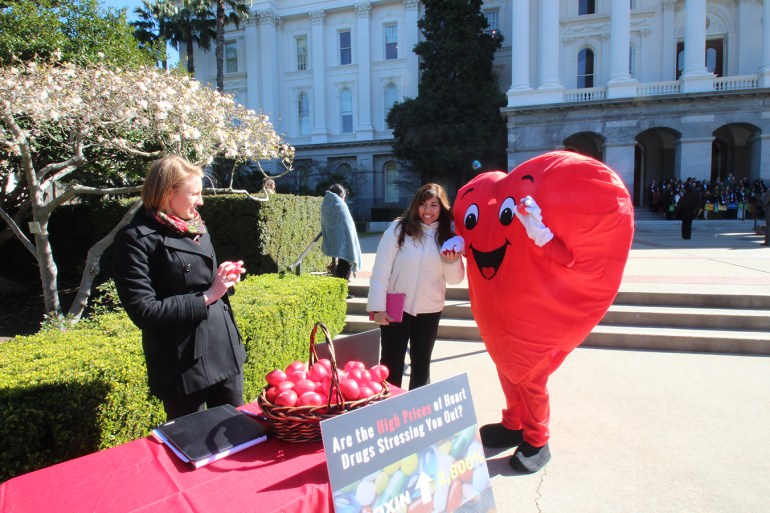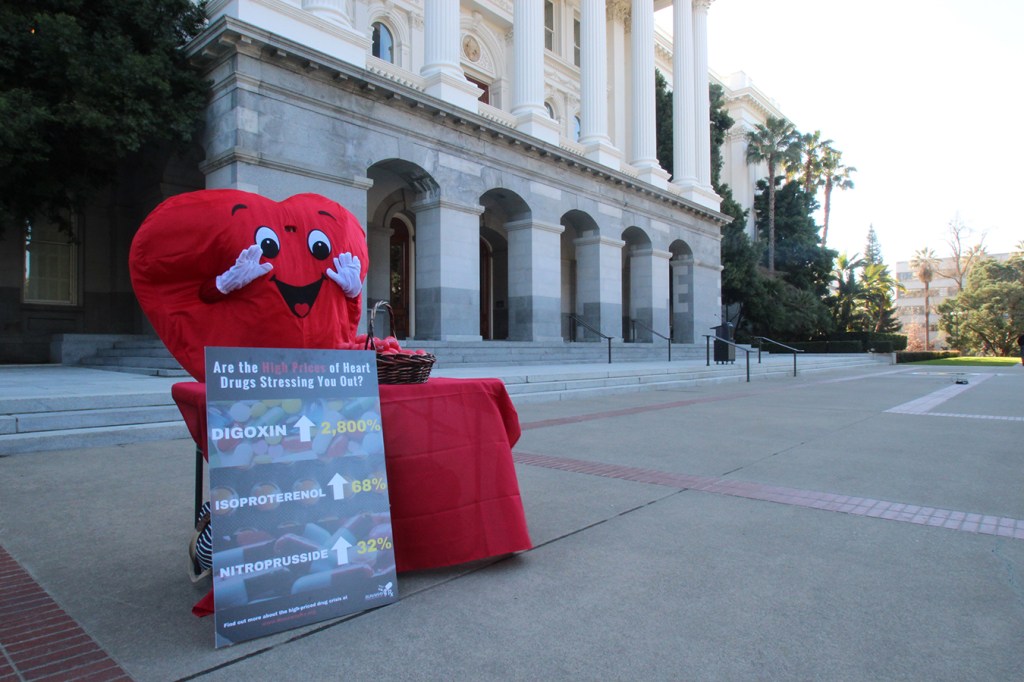SACRAMENTO, Calif. – In the age of Black Panther, Thor and Captain America, California’s health insurance plans bring you … A giant, androgynous red heart.
The health insurers debuted their bubbly superhero Tuesday in front of California’s stately Capitol building. The heart, who wore black booties and white, Michael Jackson-esque gloves, had no name. No matter. S/he bopped. S/he waved at school children. S/he flashed the thumbs-up. S/he made the Capitol feel a bit like Disneyland.
Passers-by couldn’t help but giggle at the insurance industry’s mute mascot. And they certainly seemed to have no clue that the anthropomorphized heart was merely the latest PR stunt in an ongoing feud between two health system titans: health insurers and drugmakers.

“It’s very cute. I don’t know exactly what’s going on. … What is happening here exactly?” asked Christine Danho, 25, an administrative assistant who stopped to snap a picture.
In recent years, the two deep-pocketed industries have pointed fingers at each other over the rising cost of prescription drugs, each side accusing the other of ripping off patients who need life-saving medicines.
The California Association of Health Plans, which bankrolled the event, introduced its heart “hero” and “high-priced drug nemesis” with fighting words for drugmakers.
“Pharma has made a practice of swarming the State Capitol with their minions working to keep drug prices sky high,” the lobbying group’s press release proclaimed.
True, drugmaker Pfizer shelled out $732,454 in 2017 to lobby California policymakers on health care, and the California Life Sciences Association, comprised largely of pharmaceutical companies, spent $522,323, according to the California Secretary of State.
But among the top five spenders in health care lobbying last year? The health plan association itself, which doled out about $1.2 million.
Drugmakers called the health plans out on their own tactics.
“Like a broken record, the insurers continue to blame everyone else for high health care costs when their policies are making lifesaving medicines increasingly more expensive for patients,” said Priscilla VanderVeer, a vice president with Pharmaceutical Researchers and Manufacturers of America (PhRMA).
VanderVeer’s colleague, Nicole Kasabian Evans, was a spokeswoman for the health plans not so long ago, but now she helps run PhRMA’s public relations strategy in California. And she had no qualms about criticizing her former employer’s media strategy.
“Honestly, are they generating any real news out of this event?” Kasabian Evans asked. It’s nothing more than “someone in a costume hand[ing] out tchotchkes,” she declared.
The health plan group said it timed the event to coincide with American Heart Month, and highlighted three heart disease medications on a poster board whose prices have spiked in recent years.
During the first hour of the event, the heart looked lonely, hoping for a little attention. But as the sun warmed the air and an unrelated rally brought people to the Capitol steps, onlookers cozied up to the health plans’ cherry red mascot for photo-ops or grabbed free heart-shaped stress balls.

Eric Wang ran into the heart-shaped mascot while visiting California’s Capitol. He said high drug prices are “something we need to figure out.” (Pauline Bartolone/KHN)

Lila Cervantes posed for a photo with the heart mascot at the Capitol in Sacramento. When it comes to insurers and pharmaceutical companies feuding over health costs, she said, “there’s probably a lot of right and a lot of wrong on both sides.” (Pauline Bartolone/KHN)
Eric Wang, visiting from Los Angeles for a meeting with legislators, said opposing groups need to “work together to figure out a way to make our health care system affordable.”
But it’s unlikely the feud between drugmakers and health insurers will dissipate anytime soon. The federal government is only taking small steps to control drug prices, which means the debate over drug prices will continue to flare in state houses around the country.
“That’s where the fight has shifted,” said Steve Pearson, an expert on medical costs with the Institute for Clinical and Economic Review. “There’s going to be a lot more money from both industries.”
Lila Cervantes, who was at the Capitol advocating for higher education funding, posed for a picture with the heart, but she admitted later that she didn’t know much about the war between health insurers and drugmakers.
“There’s probably a lot of right and a lot of wrong on both sides,” Cervantes said. “We gotta’ sometimes take the politics out of it and … do what’s best for the people.”
This story was produced by KFF Health News, which publishes California Healthline, an editorially independent service of the California Health Care Foundation.







